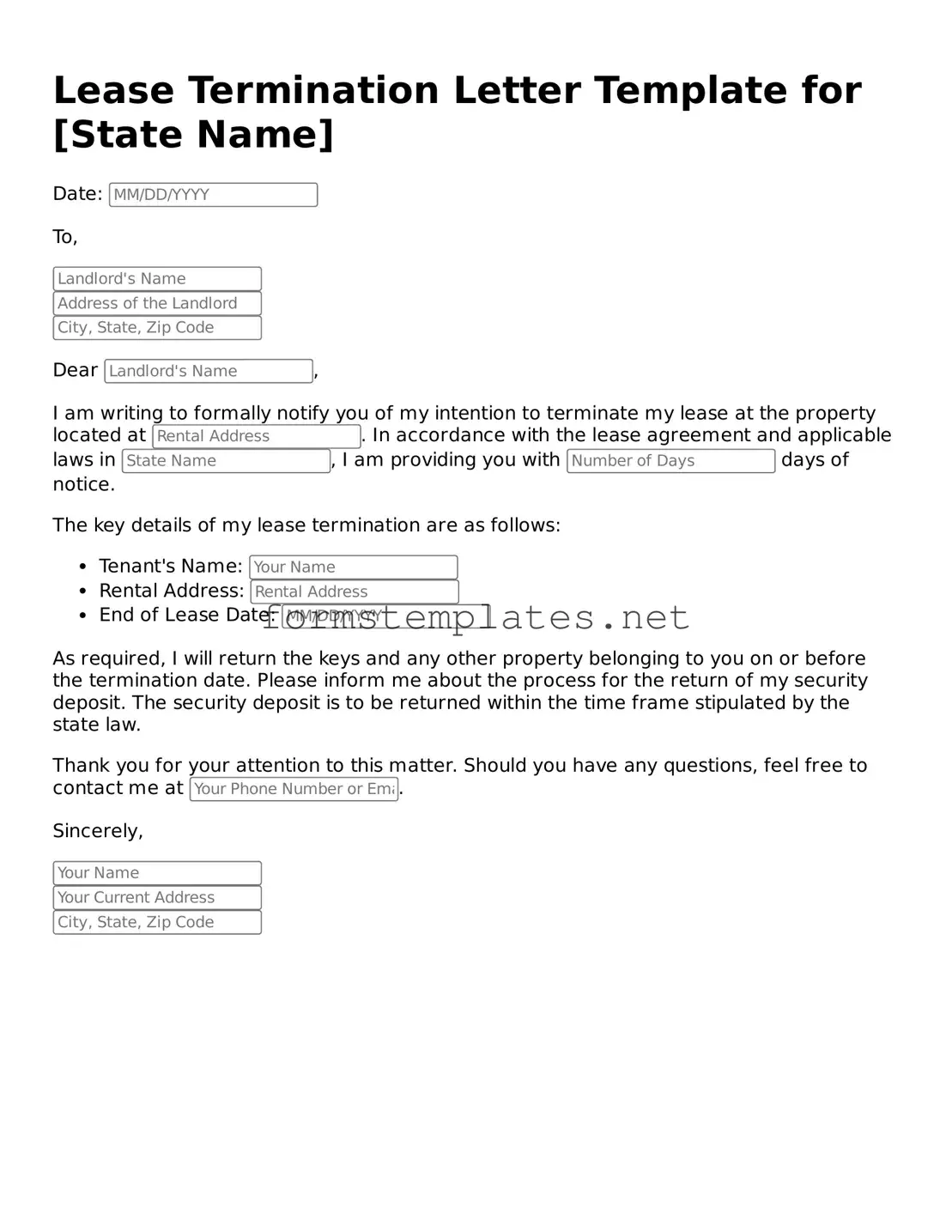Attorney-Verified Lease Termination Letter Form
A Lease Termination Letter is a formal document used by tenants or landlords to communicate the end of a lease agreement. This letter serves as a clear notification, outlining the intent to vacate or terminate the lease, and ensures that both parties are on the same page regarding the lease's conclusion. Understanding how to properly draft and deliver this letter can help avoid misunderstandings and potential disputes.
Open Editor Now
